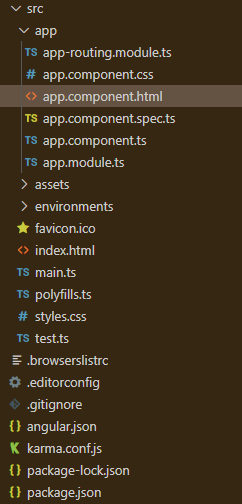Angular PrimeNG TabView 组件
Angular PrimeNG 是一个开源框架,具有丰富的原生 Angular UI 组件集,可用于出色的样式,并且该框架用于非常轻松地制作响应式网站。在本文中,我们将了解如何在 Angular PrimeNG 中使用 TabView 组件。我们还将了解将在代码中使用的属性、事件、样式以及它们的语法。
TabView 组件:它 用于以标签的形式显示内容。
TabView 的属性:
- activeIndex:它指定活动选项卡的索引,以编程方式更改所选选项卡。它接受数字数据类型,默认值为空。
- controlClose:用于指定在onClose事件时是否控制tab关闭。它是布尔数据类型,默认值为 false。
- style:是组件的内联样式。它是字符串数据类型,默认值为空。
- styleClass:组件的样式类。它是字符串数据类型,默认值为空。
TabPanel 的属性:
- header :它指定 tabPanel 的标题。它是字符串数据类型,默认值为空。
- selected :它定义选项卡是否处于活动状态。它是布尔数据类型,默认值为 false。
- disabled :当它的值为 true 时,它指定选项卡不能被激活。它是布尔数据类型,默认值为 false。
- 可关闭:它定义是否可以删除选项卡。它是布尔数据类型,默认值为 false。
- headerStyle :它是选项卡标题的内联样式。它是字符串数据类型,默认值为空。
- headerStyleClass :它指定选项卡标题的样式类。它是字符串数据类型,默认值为空。
- cache :它指定延迟加载的面板是否应避免在重新选择时再次加载。它是布尔数据类型,默认值为 true。
- tooltip :它指定在悬停时在工具提示中显示的咨询信息。它接受任何数据类型,默认值为空。
- tooltipStyleClass :它指定工具提示的样式类。它是字符串数据类型,默认值为空。
- tooltipPosition :指定工具提示的位置,有效值为右、左、上、下。它是字符串数据类型,默认值为顶部。
- tooltipPositionStyle :它指定 CSS 位置的类型。它是字符串数据类型,默认值为绝对值
事件:
- onChange:这是一个在选项卡更改时触发的回调。
- onClose:它是在标签关闭时触发的回调。
造型:
- p-tabview :它是容器元素
- p-tabview-nav :它是标题的容器。
- p-tabview-selected:被选中的标签页眉。
- p-tabview-panels:它是容器面板。
- p-tabview-panel:它是选项卡的内容。
创建 Angular 应用程序和模块安装:
- 第 1 步:使用以下命令创建一个 Angular 应用程序。
ng new appname- 第 2 步:创建项目文件夹(即 appname)后,使用以下命令移动到该文件夹。
cd appname- 第 3 步:在给定目录中安装 PrimeNG。
npm install primeng --save
npm install primeicons --save项目结构:它将如下所示:

示例 1:这是说明如何使用 TabView 组件的基本示例。
app.component.html
GeeksforGeeks
PrimeNG TabView Component
Content1
Content2
Content3
app.component.ts
import { Component } from '@angular/core';
@Component({
selector: 'my-app',
templateUrl: './app.component.html',
styleUrls: ['./app.component.scss']
})
export class AppComponent {}app.module.ts
import { NgModule } from "@angular/core";
import { BrowserModule } from "@angular/platform-browser";
import { BrowserAnimationsModule }
from "@angular/platform-browser/animations";
import { AppComponent } from "./app.component";
import { TabViewModule } from "primeng/tabview";
@NgModule({
imports: [BrowserModule,
BrowserAnimationsModule,
TabViewModule],
declarations: [AppComponent],
bootstrap: [AppComponent],
})
export class AppModule {}app.component.html
GeeksforGeeks
PrimeNG TabView Component
Content1
Content2
Content3
app.component.ts
import { Component } from '@angular/core';
@Component({
selector: 'my-app',
templateUrl: './app.component.html',
styleUrls: ['./app.component.scss']
})
export class AppComponent {}app.module.ts
import { NgModule } from "@angular/core";
import { BrowserModule } from "@angular/platform-browser";
import { BrowserAnimationsModule }
from "@angular/platform-browser/animations";
import { AppComponent } from "./app.component";
import { TabViewModule } from "primeng/tabview";
@NgModule({
imports: [BrowserModule,
BrowserAnimationsModule,
TabViewModule],
declarations: [AppComponent],
bootstrap: [AppComponent],
})
export class AppModule {}app.component.ts
import { Component } from '@angular/core';
@Component({
selector: 'my-app',
templateUrl: './app.component.html',
styleUrls: ['./app.component.scss']
})
export class AppComponent {}
app.module.ts
import { NgModule } from "@angular/core";
import { BrowserModule } from "@angular/platform-browser";
import { BrowserAnimationsModule }
from "@angular/platform-browser/animations";
import { AppComponent } from "./app.component";
import { TabViewModule } from "primeng/tabview";
@NgModule({
imports: [BrowserModule,
BrowserAnimationsModule,
TabViewModule],
declarations: [AppComponent],
bootstrap: [AppComponent],
})
export class AppModule {}
输出:

示例 2:在这个示例中,我们将了解如何在 Tabview 组件中使用可关闭属性。
app.component.html
GeeksforGeeks
PrimeNG TabView Component
Content1
Content2
Content3
app.component.ts
import { Component } from '@angular/core';
@Component({
selector: 'my-app',
templateUrl: './app.component.html',
styleUrls: ['./app.component.scss']
})
export class AppComponent {}
app.module.ts
import { NgModule } from "@angular/core";
import { BrowserModule } from "@angular/platform-browser";
import { BrowserAnimationsModule }
from "@angular/platform-browser/animations";
import { AppComponent } from "./app.component";
import { TabViewModule } from "primeng/tabview";
@NgModule({
imports: [BrowserModule,
BrowserAnimationsModule,
TabViewModule],
declarations: [AppComponent],
bootstrap: [AppComponent],
})
export class AppModule {}
输出:

参考: https://primefaces.org/primeng/showcase/#/tabview